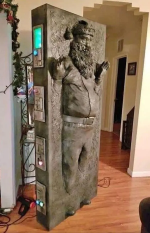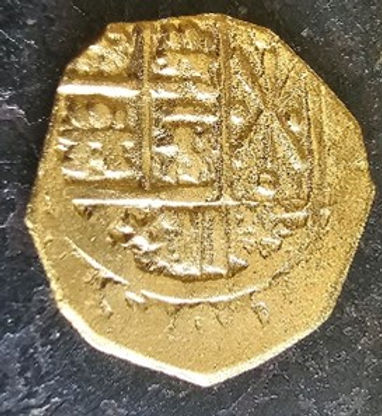
You are using an out of date browser. It may not display this or other websites correctly.
You should upgrade or use an alternative browser.
You should upgrade or use an alternative browser.
Found Treasure
- Thread starter nickndfl
- Start date
Welcome to the Precious Metals Bug Forums
Welcome to the PMBug forums - a watering hole for folks interested in gold, silver, precious metals, sound money, investing, market and economic news, central bank monetary policies, politics and more. You can visit the forum page to see the list of forum nodes (categories/rooms) for topics.
Why not register an account and join the discussions? When you register an account and log in, you may enjoy additional benefits including no Google ads, market data/charts, access to trade/barter with the community and much more. Registering an account is free - you have nothing to lose!
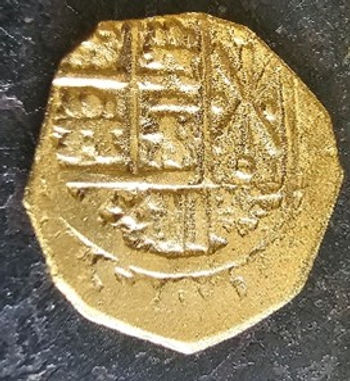
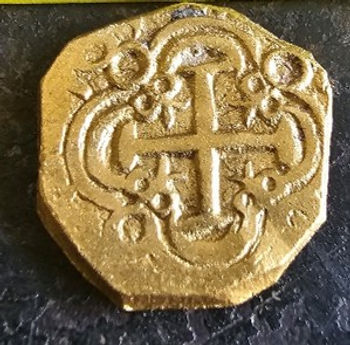
The photos don't provide any reference for scale. I'm assuming the coins are tiny. Crazy to think they used to mint coins like this with irregular shapes and no reeding. Made it easier for the crown to eventually debase the mintings I guess.
- Messages
- 10,089
- Reaction score
- 7,816
- Points
- 238
Douglass Beach Wreck
A 1715 Fleet wreck site located a few miles south of the Fort Pierce Inlet. It is often referred to by its old name, “Colored Beach.” In some early Real Eight Company correspondence, it was referred to as the “Gold Wreck,” and for good reason. Some 3,376 Spanish Colonial gold coins were recovered there in the first two months of their 1964 salvage season. This has been a very productive wreck site for 1715 Fleet related coins and artifacts. This wreck site was the subject of an extensive article written by Jorge Proctor and published in April 2021. The article offers new evidence that this site does not contain the remains of Ubilla’s patache, the Nuestra Senora de las Nieves y las Animus, but rather the remains of his fragitilla, the Santa Rita y las Animus, nicknamed the la Marigeleta.
Douglass Beach Wreck - 1715 Fleet Society
A 1715 Fleet wreck site located a few miles south of the Fort Pierce Inlet. It is often referred to by its old name, “Colored Beach.” In some early Real Eight Company correspondence, it was ref
 1715fleetsociety.com
1715fleetsociety.com
- Messages
- 10,089
- Reaction score
- 7,816
- Points
- 238
1715 Treasure Fleet GPS Cordinates

1715 Treasure Fleet GPS Cordinates
Here it is, I found it again.... SOUTHEAST FLORIDA SITES: INDIAN RIVER COUNTY SITES: – North of the inlet is "Chuck’s Steakhouse", also known as Half-Reale Beach, after the large numbers of Spanish 1715 cob coins found here! Evidently one of the 1715 Fleet galleons sank just off this...
- Messages
- 11,891
- Reaction score
- 2,580
- Points
- 238
Long-lost Ship Found in the Desert Laden with Gold
The discovery of a ship that disappeared five hundred years ago and was found in a desert in southwest Africa with gold coins aboard has been one of the most exciting archaeological finds of recent years.
The Bom Jesus (The Good Jesus) was a Portuguese vessel that set sail from Lisbon, Portugal, on Friday, March 7, 1533. Its fate was unknown until 2008 when its remains were discovered in the desert of Namibia during diamond mining operations near the coast of the African nation.
When it sank in a fierce storm, it was on its way to India laden with treasures like gold and copper ingots. Two-thousand pure gold coins and tens of thousands of pounds of copper ingots were discovered on the Bom Jesus, almost all intact.
Read the rest:
The discovery of a ship that disappeared five hundred years ago and was found in a desert in southwest Africa with gold coins aboard has been one of the most exciting archaeological finds of recent years.
The Bom Jesus (The Good Jesus) was a Portuguese vessel that set sail from Lisbon, Portugal, on Friday, March 7, 1533. Its fate was unknown until 2008 when its remains were discovered in the desert of Namibia during diamond mining operations near the coast of the African nation.
When it sank in a fierce storm, it was on its way to India laden with treasures like gold and copper ingots. Two-thousand pure gold coins and tens of thousands of pounds of copper ingots were discovered on the Bom Jesus, almost all intact.
Read the rest:
- Messages
- 11,891
- Reaction score
- 2,580
- Points
- 238
The Hunt for a 17th Century Sunken Treasure
May 14, 20237:08
As a child Carl Allen came to the Bahamas, to the small island of Walker's Cay, for the fishing. Today, the retired businessman is fishing for gold, silver and gems from the wreck of a Spanish treasure cargo ship that sank in 1656. Correspondent Lee Cowan takes a deep dive into the lore of hidden treasure, and the drive of a man living a dream.
Channel: https://www.youtube.com/@TheOutdoorswithCarlAllen/videos
Long-lost Ship Found in the Desert Laden with Gold
The discovery of a ship that disappeared five hundred years ago and was found in a desert in southwest Africa with gold coins aboard has been one of the most exciting archaeological finds of recent years.
The Bom Jesus (The Good Jesus) was a Portuguese vessel that set sail from Lisbon, Portugal, on Friday, March 7, 1533. Its fate was unknown until 2008 when its remains were discovered in the desert of Namibia during diamond mining operations near the coast of the African nation.
When it sank in a fierce storm, it was on its way to India laden with treasures like gold and copper ingots. Two-thousand pure gold coins and tens of thousands of pounds of copper ingots were discovered on the Bom Jesus, almost all intact.
Read the rest:
Sorta [mis-]leads the [pseudo-]info consumer towards conceptualizing of an actual desert scenario and thusly a mystery as to how a ship could possibly land in a desert.
When in Actuality, it sank off the coast and has been underwater up until a mining corporation "reclaimed" that area off the coast, at which point they basically buried it.
Even if they hadn't buried it, and it was found in such a location, i think it's blatantly misleading for anyone to suggest it had anything to do with a desert.
Guessing whomever controls the mining corporation probably doesn't want to much attention brought upon the environmental damage caused by mining and would rather the gullible masses believe a desert fairytale instead.
To maintain whatever status quo which allows the corporation to freely take advantage, destroy and pollute that area of south western Namibian coastline.
They surely would seek to avoid potentially facing public screecher mobs and possibly leading to them being forced to cough up millions.
...
To maintain whatever status quo which allows the corporation to freely take advantage, destroy and pollute that area of south western Namibian coastline.
They surely would seek to avoid potentially facing public screecher mobs and possibly leading to them being forced to cough up millions.
...
Last edited by a moderator:
From what minimal info i can find, it seems kinda weird that the mainscream general consensus asserts of a "desert" supposedly being the location in which it was discovered.
Sorta [mis-]leads the [pseudo-]info consumer towards conceptualizing of an actual desert scenario and thusly a mystery as to how a ship could possibly land in a desert.
When in Actuality, it sank off the coast and has been underwater up until a mining corporation "reclaimed" that area off the coast, at which point they basically buried it.
Even if they hadn't buried it, and it was found in such a location, i think it's blatantly misleading for anyone to suggest it had anything to do with a desert.
Or, in reality, water levels dropped significantly even in just the last 500 years.
- Messages
- 11,891
- Reaction score
- 2,580
- Points
- 238
Back on topic...........
From the link:
Fifty-one days. That’s how long it took for Chelsea Gotta of Pella, Iowa, to find the treasure chest containing $25,000 that two Utahns hid in the state’s great outdoors for the fourth year in a row.
The chest was masked under heaps of pine cone dust at the base of a tree off Mueller Park Trail in Bountiful. Gotta almost gave up before she found it. In the midst of her third trip to Utah for the hunt, she knew she needed to start her 16-hour drive back home soon to make work on Tuesday.
“My time was running out. I was getting frustrated, I was crying,” she said. “I’m like ‘I’ve wasted all this time. This is ridiculous. What am I doing?’”
More:
From the link:
Fifty-one days. That’s how long it took for Chelsea Gotta of Pella, Iowa, to find the treasure chest containing $25,000 that two Utahns hid in the state’s great outdoors for the fourth year in a row.
The chest was masked under heaps of pine cone dust at the base of a tree off Mueller Park Trail in Bountiful. Gotta almost gave up before she found it. In the midst of her third trip to Utah for the hunt, she knew she needed to start her 16-hour drive back home soon to make work on Tuesday.
“My time was running out. I was getting frustrated, I was crying,” she said. “I’m like ‘I’ve wasted all this time. This is ridiculous. What am I doing?’”
More:
- Messages
- 11,891
- Reaction score
- 2,580
- Points
- 238
Today was the day............0n July 20, 1985 Mel struck gold!
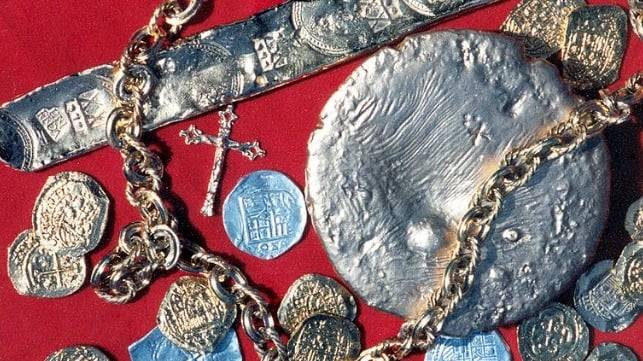
 www.maritime-executive.com
www.maritime-executive.com

The World's Most Valuable Shipwreck: The Nuestra Senora de Atocha
On this same day, 35 years ago, the legendary deep-sea explorer Mel Fisher discovered the shipwreck...
In the backyard.
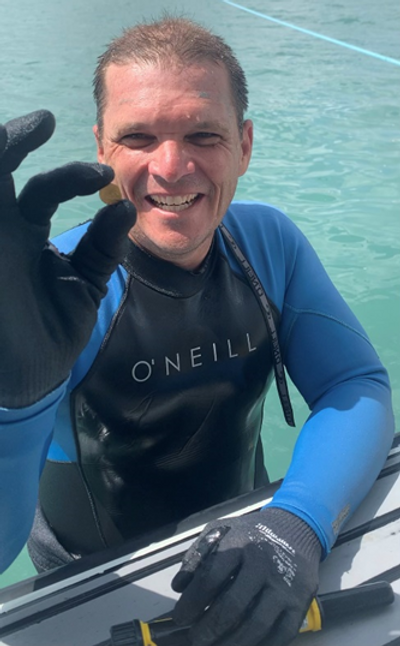
 www.1715treasurefleet.com
www.1715treasurefleet.com

More Gold Discovered!
Jason and Joe Gooch, along with their diver Nick Rotindo, working the Cabin Wreck (8IR23/S27) aboard their excavation vessel the M/V Blackwater (C-11), recently found a beautiful Lima 1 Escudo. Nick made the exciting discovery! It was also a family day on site with a number of their kids on...
 www.1715treasurefleet.com
www.1715treasurefleet.com
- Messages
- 11,891
- Reaction score
- 2,580
- Points
- 238
Link to Treasure Beaches Report. Some neat stuff here.
 tbr2020.blogspot.com
tbr2020.blogspot.com
Here's a link to the older stuff.
 treasurebeachesreport.blogspot.com
treasurebeachesreport.blogspot.com
Treasure Beaches Report: Pt. 2. (2020 and Beyond).
The Grandfather of Treasure/Metal Detecting Blogs. Copyright 2020, 2021, 2022, 2023 & 2024.
Here's a link to the older stuff.
The Treasure Beaches Report Direct From Florida's Treasure Coast.
<center>Copyright 2008 - 2020. Contact Treasureguide@comcast.net for permission. <a title="HTML hit counter - Quick-counter.net" href="http://www.quick-counter.net/"><img alt="HTML hit counter - Quick-counter.net" src="http://www.quick-counter.net/aip.php?tp=bb&tz=US%2FEastern"...
- Messages
- 11,891
- Reaction score
- 2,580
- Points
- 238
Edited 10/8 due to pulled video.
16:12
Tune in to see the team find and recover a 17th Century Silver Bar off of the Ship Wreck, Nuestra Señora de las Maravillas! We head to the Bahamas Maritime Museum to learn what our Archaeologists discovered about the Silver Bar!
17th Century Silver Bar Recovered off of Sunken Shipwreck!
Sep 5, 202316:12
Tune in to see the team find and recover a 17th Century Silver Bar off of the Ship Wreck, Nuestra Señora de las Maravillas! We head to the Bahamas Maritime Museum to learn what our Archaeologists discovered about the Silver Bar!
Last edited:
- Messages
- 1,456
- Reaction score
- 2,076
- Points
- 238
17th Century Silver Bar Recovered off a Sunken Shipwreck!
Aug 25, 2023
16:12
S1Ep5 Bahama Banks:
Recovering Lost LegaciesTune in to see the team find and recover a 17th Century Silver Bar off of the Ship Wreck, Nuestra Señora de las Maravillas! We head to the Bahamas Maritime Museum to learn what our Archaeologists discovered about the Silver Bar!
Holy Senora!! Without the backstory, I accidentally found a piece of eight while adjusting my scuba tank while sitting in 20'. Mel Fisher ID'd it for me (really nice guy) it was from the Nuestra Senora de las Maravillas (Our New Lady of Marvels). I had a jeweler put a holder on it:
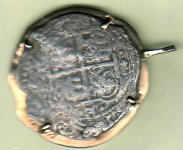
- Messages
- 11,891
- Reaction score
- 2,580
- Points
- 238
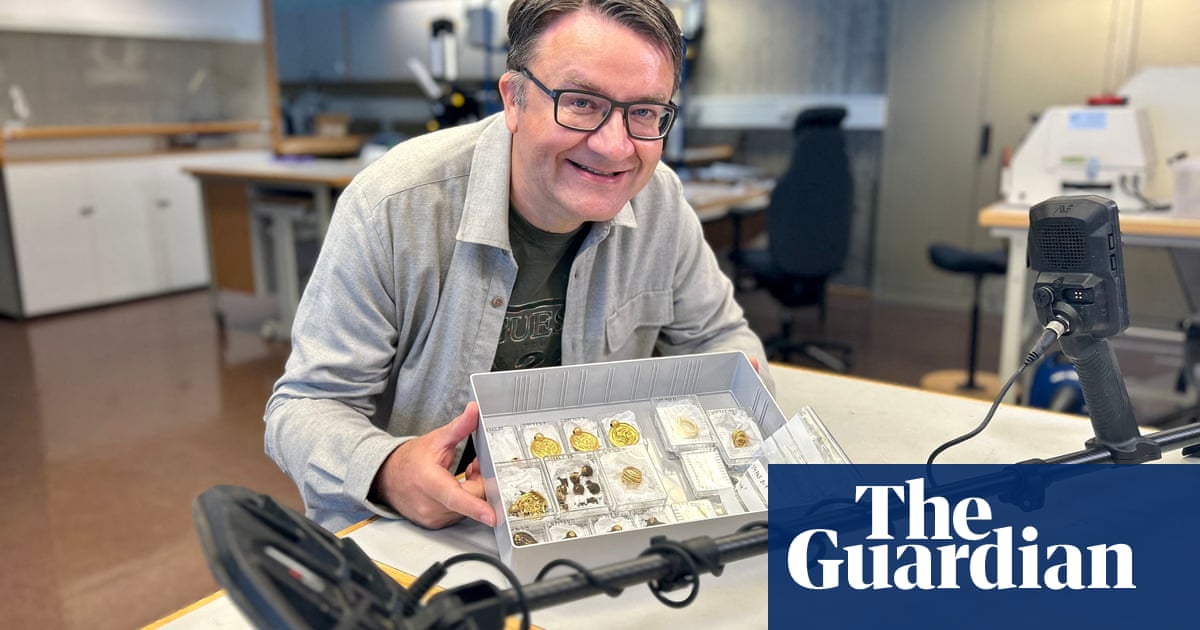
Metal detectorist makes Norway’s ‘gold find of century’
Erlend Bore, who was out walking on doctor’s orders, finds cache including rare medallions from about AD500
- Messages
- 11,891
- Reaction score
- 2,580
- Points
- 238
*Posting this for fun. No clue if the finds are real.
10:02
Channel: https://www.youtube.com/@arkeologofficial/videos
Ten Great Treasures Found in 2023. - Top 10 Treasure Hunts!
Sep 6, 202310:02
Channel: https://www.youtube.com/@arkeologofficial/videos
- Messages
- 1,456
- Reaction score
- 2,076
- Points
- 238
(*snork) This being a gold bug site, there is gonna be a coupla folks here that would look at the picture above and think:
"Just a fargin minnit, here: We ALL know that a cube of gold a mere 14" on a side weighs ONE TON!!"
The opening of that jug is more than 14". More like a cubit (19") And the jug is at least four feet high. Just a cylinder of the gold coins 14" diameter (not adding the volume of the bulging sides) would weigh at least four tons.
So they got a coupla itty bitty physics problems, two wit:
1. Add the fat part of the container's content and you get another two tons at least.
2. WTF kind of clay did these folks use to make those jugs that could hold six tons of gold coins?
3. They are lifting it out a a hole with a fargin tie-down strap? Rilly?
4. The gold coins laid under all that dirt in an open container without getting even a tad dusty?
So I tried to find that double-jug "find" pictured in the collage of grave robbing finds -- No luck. The grave finds are doggone interesting for the most part. Burial with the owners' wealth was standard in the Fertile Crescent (eg: Mesopotamia). It looks like a lot of (clandestine) work involved to find and dig the stuff up.
Turkey/Syria area grave robbing is not my cuppa, but I would most ricky-tick watch.
"Just a fargin minnit, here: We ALL know that a cube of gold a mere 14" on a side weighs ONE TON!!"
The opening of that jug is more than 14". More like a cubit (19") And the jug is at least four feet high. Just a cylinder of the gold coins 14" diameter (not adding the volume of the bulging sides) would weigh at least four tons.
So they got a coupla itty bitty physics problems, two wit:
1. Add the fat part of the container's content and you get another two tons at least.
2. WTF kind of clay did these folks use to make those jugs that could hold six tons of gold coins?
3. They are lifting it out a a hole with a fargin tie-down strap? Rilly?
4. The gold coins laid under all that dirt in an open container without getting even a tad dusty?
So I tried to find that double-jug "find" pictured in the collage of grave robbing finds -- No luck. The grave finds are doggone interesting for the most part. Burial with the owners' wealth was standard in the Fertile Crescent (eg: Mesopotamia). It looks like a lot of (clandestine) work involved to find and dig the stuff up.
Turkey/Syria area grave robbing is not my cuppa, but I would most ricky-tick watch.
- Messages
- 11,891
- Reaction score
- 2,580
- Points
- 238
Is There Sunken Treasure Beneath the Treacherous Currents of Hell Gate?
Just off the coast of Astoria, Queens, at the confluence of the Harlem and East Rivers, is a narrow tidal channel. Hell Gate. Its fast currents change multiple times a day and it used to be riddled with rocks just beneath the surface. Even today, visitors to Randall’s Island Park can see the swirling churn and watch pleasure boaters struggle through. American author Washington Irving wrote an essay about it: “Woe to the unlucky vessel that ventures into its clutches.”But many a vessel did venture into those clutches over the centuries. Traversing it could save sailors navigating between New York Harbor and Southern New England days of travel around Long Island. This expediency often came at a cost. Hell Gate is the final resting place of literally hundreds of ships. Most of them are forgotten but one continues to captivate. Because down there, under the minor maelstroms, is the promise of gold.
The East River runs up from New York Harbor with Manhattan on one side and first Brooklyn then Queens on the other. At Randall’s Island it splits. To the west, it becomes the Harlem River, which skirts around the top of Manhattan to join the Hudson. In the other direction, it connects to the entirety of Long Island Sound—but it’s easy to miss that this connection comes only via a single, slim channel. Each time the tide turns, the Atlantic forces its way through this passage in one direction or the other, with the discharge of the Harlem River adding to the chaos.
More:

Is There Sunken Treasure Beneath the Treacherous Currents of Hell Gate?
In the heart of New York City, a centuries-long hunt for Revolutionary War–Era gold.
- Messages
- 1,456
- Reaction score
- 2,076
- Points
- 238
EVER kewl. My Daddy useta dive offa the rocks at Hell Gate back in the 19teens. He was born in 1902, lived right by the water there. He would describe to me how he watched the Hell Gate Bridge being built.Is There Sunken Treasure Beneath the Treacherous Currents of Hell Gate?
Just off the coast of Astoria, Queens, at the confluence of the Harlem and East Rivers, is a narrow tidal channel. Hell Gate. Its fast currents change multiple times a day and it used to be riddled with rocks just beneath the surface. Even today, visitors to Randall’s Island Park can see the swirling churn and watch pleasure boaters struggle through. American author Washington Irving wrote an essay about it: “Woe to the unlucky vessel that ventures into its clutches.”
But many a vessel did venture into those clutches over the centuries. Traversing it could save sailors navigating between New York Harbor and Southern New England days of travel around Long Island. This expediency often came at a cost. Hell Gate is the final resting place of literally hundreds of ships. Most of them are forgotten but one continues to captivate. Because down there, under the minor maelstroms, is the promise of gold.
The East River runs up from New York Harbor with Manhattan on one side and first Brooklyn then Queens on the other. At Randall’s Island it splits. To the west, it becomes the Harlem River, which skirts around the top of Manhattan to join the Hudson. In the other direction, it connects to the entirety of Long Island Sound—but it’s easy to miss that this connection comes only via a single, slim channel. Each time the tide turns, the Atlantic forces its way through this passage in one direction or the other, with the discharge of the Harlem River adding to the chaos.
More:

Is There Sunken Treasure Beneath the Treacherous Currents of Hell Gate?
In the heart of New York City, a centuries-long hunt for Revolutionary War–Era gold.www.atlasobscura.com
- Messages
- 1,456
- Reaction score
- 2,076
- Points
- 238
Just saw this above. The reason why the "cobs" are "rough as a cob" is simply due to mass production.The photos don't provide any reference for scale. I'm assuming the coins are tiny. Crazy to think they used to mint coins like this with irregular shapes and no reeding. Made it easier for the crown to eventually debase the mintings I guess.
Here's what was going down: There was gold coming in from all over to mints like Potosi. There was so much gold to be transformed into coins that the standard procedure was to drag a line in the sand and pour molten metal in it.
The long bars thus made were sliced into coin thickness, and the wonky disk would be placed on a steel form.
A blunt bar with a steel obverse engraved in it would be placed on top of the disk, and then hit with a hammer -- thereby forming the reverse/obverse detail.
Then the "cob" would be weighed, and clipped with a chisel until it was the right weight. This was done millions of times. This WEIGHT requirement made all the crude coins equal, despite shape, size, or thickness variations.
It was the fastest way to get a measured amount of coinage into ships to take back to the Old World.
- Messages
- 11,891
- Reaction score
- 2,580
- Points
- 238
Posted this on a different forum (not gim) 11 years ago. Short, fun vid.
3:30
The evolution of modern salvage diving can be understood through life of one man. Arthur McKee Jr., considered the "father of modern treasure hunting," was the first to recognize that the reef-riddled Florida Keys provided a precious landscape for wrecked ships carrying even more precious cargo. He would be the first to salvage these ships, and in the process, become a pioneer in the salvage industry and the history of diving.
Art McKee: "The Father of Modern Treasure Hunting" at the History of Diving Museum
3:30
The evolution of modern salvage diving can be understood through life of one man. Arthur McKee Jr., considered the "father of modern treasure hunting," was the first to recognize that the reef-riddled Florida Keys provided a precious landscape for wrecked ships carrying even more precious cargo. He would be the first to salvage these ships, and in the process, become a pioneer in the salvage industry and the history of diving.
- Messages
- 1,456
- Reaction score
- 2,076
- Points
- 238
I visited the original McKee Museum 50 years ago. Then it closed for quite a while.
Aha. Herself looked at the pic of the new museum with McKee Jr. She said: "Tell them about how McKee stuck it to the greedy lawmakers."
So here goes:
The legal vipers got McKee in such a fargin bind over the thousands of pieces of 8 -- wanting most, if not all he found because of where he found it that he went out and got himself filmed throwing them back into the ocean at random, while stating to the vipers: "OK, this time YOU find them." <-- TINS
Aha. Herself looked at the pic of the new museum with McKee Jr. She said: "Tell them about how McKee stuck it to the greedy lawmakers."
So here goes:
The legal vipers got McKee in such a fargin bind over the thousands of pieces of 8 -- wanting most, if not all he found because of where he found it that he went out and got himself filmed throwing them back into the ocean at random, while stating to the vipers: "OK, this time YOU find them." <-- TINS
- Messages
- 11,891
- Reaction score
- 2,580
- Points
- 238
19th Century Shipwreck Cannon
Oct 23, 202312:13
_________________________________________________
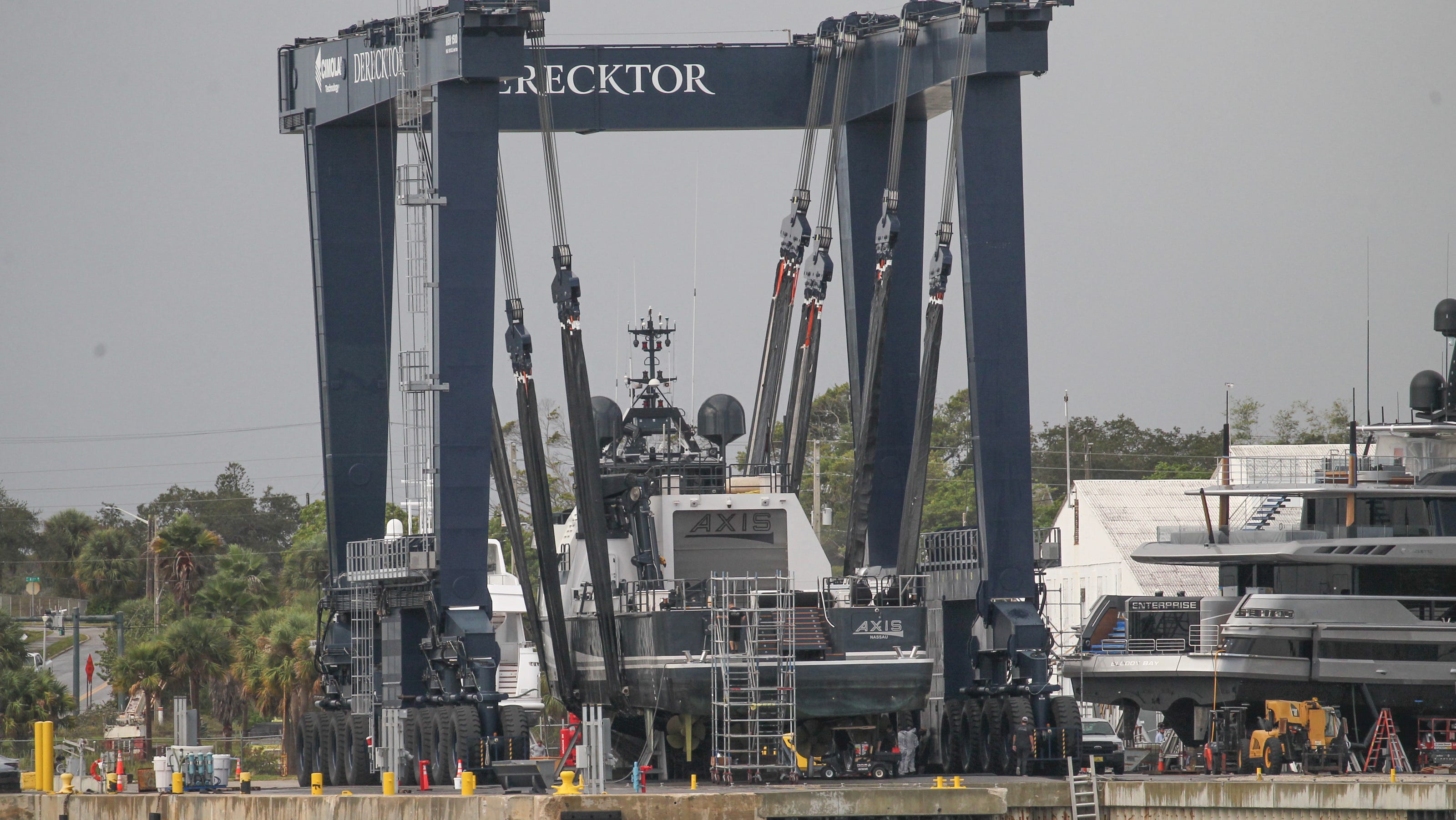
Treasure hunter Carl Allen, owner of Walker's Cay, having his yacht repaired in Florida
The 180-foot vessel, owned by treasure hunter and Walker's Cay owner, is being repaired at the Port of Fort Pierce.
www.tcpalm.com
- Messages
- 11,891
- Reaction score
- 2,580
- Points
- 238
Two Roman coin hoards were declared treasure on Monday 9th October by the Assistant Coroner for North Wales (East & Central), Kate Robertson
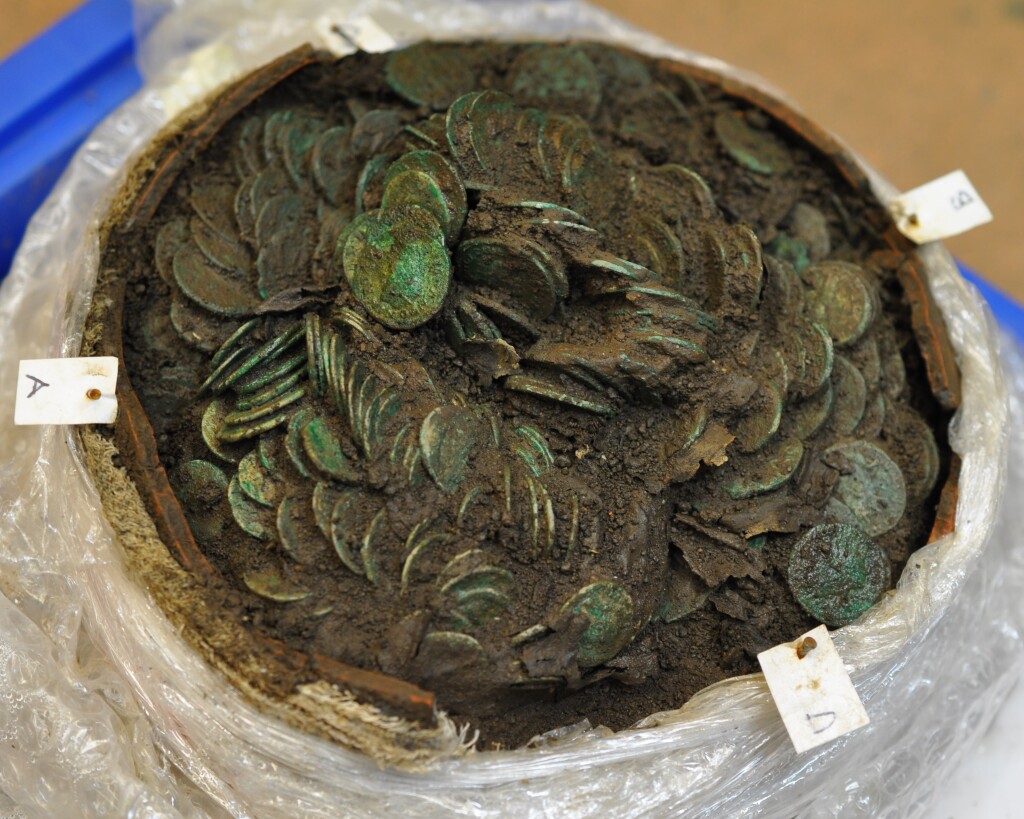
 museum.wales
museum.wales

Roman Treasure Found in the Conwy Valley
Two Roman coin hoards were declared treasure on Monday 9th October by the Assistant Coroner for Nort...
- Messages
- 11,891
- Reaction score
- 2,580
- Points
- 238
Colombia plans to recover up to $20B in sunken treasure from 'Holy Grail of shipwrecks
Colombia is working to speed up the recovery of as much as $20 billion of sunken treasure from a centuries-old shipwreck as a U.S. company sues for half of the findings.Colombian President Gustavo Petro told officials to exhume the Spanish galleon San José from the Caribbean Sea before his term ends in 2026, Minister of Culture Juan David Correa told Bloomberg in a phone interview last week.
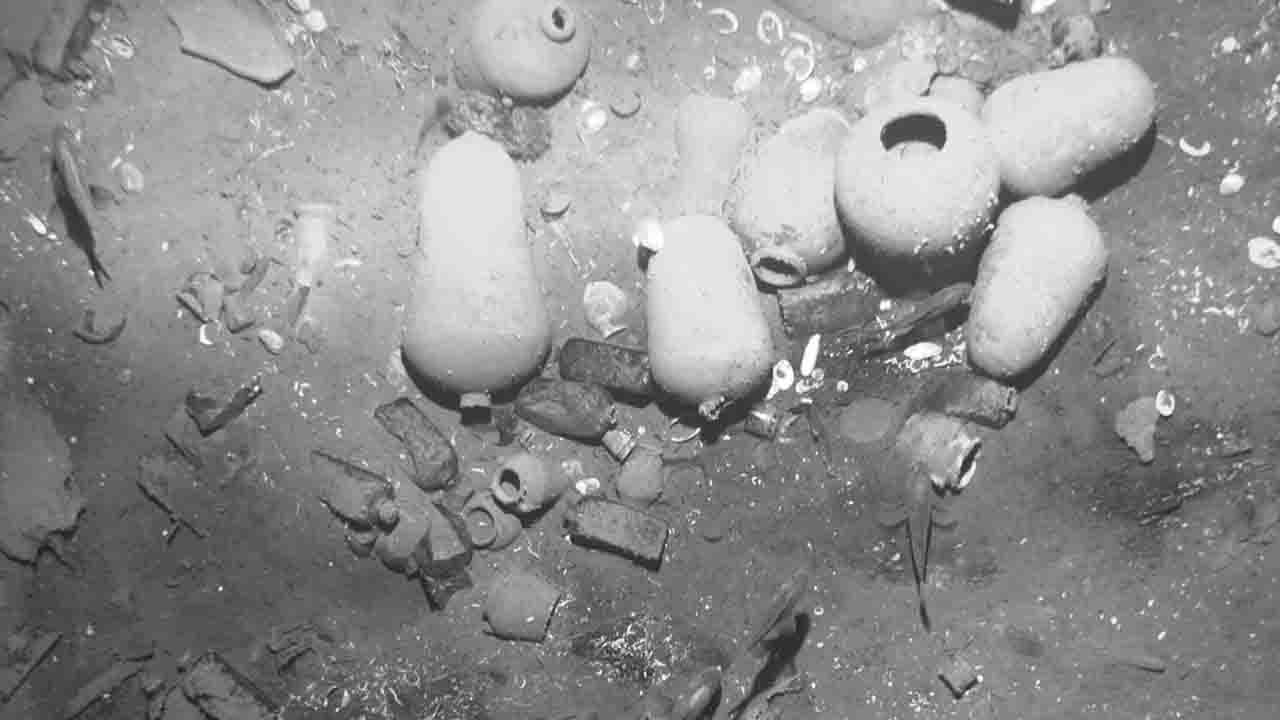
Colombia plans to recover up to $20B in sunken treasure from 'Holy Grail of shipwrecks'
Colombian President Gustavo Petro wants to recover the treasure of the sunken Spanish galleon San José before his term ends in 2026, an officials said.
- Messages
- 11,891
- Reaction score
- 2,580
- Points
- 238
Not gold or silver.
Discovered hanging in a kitchen during a house clearance in provincial France and destined for the trash, "Christ Mocked" by the Florentine master Cimabue has been declared a national treasure and will find its new home at the world-renowned Louvre Museum in Paris.
The painting was stumbled upon during a routine house clearance in 2019, The Times reports. "Christ Mocked," initially believed to be of no value, was eventually sold at auction for a staggering $25 million.
The owner, a woman in her nineties, was utterly unaware that she had been looking at an art treasure every day, believing it to be a worthless icon from Russia, and she planned to put it in the trash.
More:
A homeowner planned to throw away a painting hanging in her kitchen — it turned out to be a 13th-century masterpiece worth $25 million
Discovered hanging in a kitchen during a house clearance in provincial France and destined for the trash, "Christ Mocked" by the Florentine master Cimabue has been declared a national treasure and will find its new home at the world-renowned Louvre Museum in Paris.
The painting was stumbled upon during a routine house clearance in 2019, The Times reports. "Christ Mocked," initially believed to be of no value, was eventually sold at auction for a staggering $25 million.
The owner, a woman in her nineties, was utterly unaware that she had been looking at an art treasure every day, believing it to be a worthless icon from Russia, and she planned to put it in the trash.
More:
- Messages
- 11,891
- Reaction score
- 2,580
- Points
- 238
Roughly 30 miles off the coast of Key West, Florida, sits a ship called The Dare. Its exact location is a closely guarded secret because, deep below the crystal-clear water, through hundreds of years of sand and shells, the crew believes there is a pile of sunken treasure.
The Dare is owned and operated by the company Mel Fisher's Treasures. It’s part of a fleet of salvage ships that have come to these waters for half a century searching for lost riches from the Nuestra Señora de Atocha, a Spanish galleon loaded with gold, silver and gemstones that sank off the Florida coast in a hurricane in 1622.
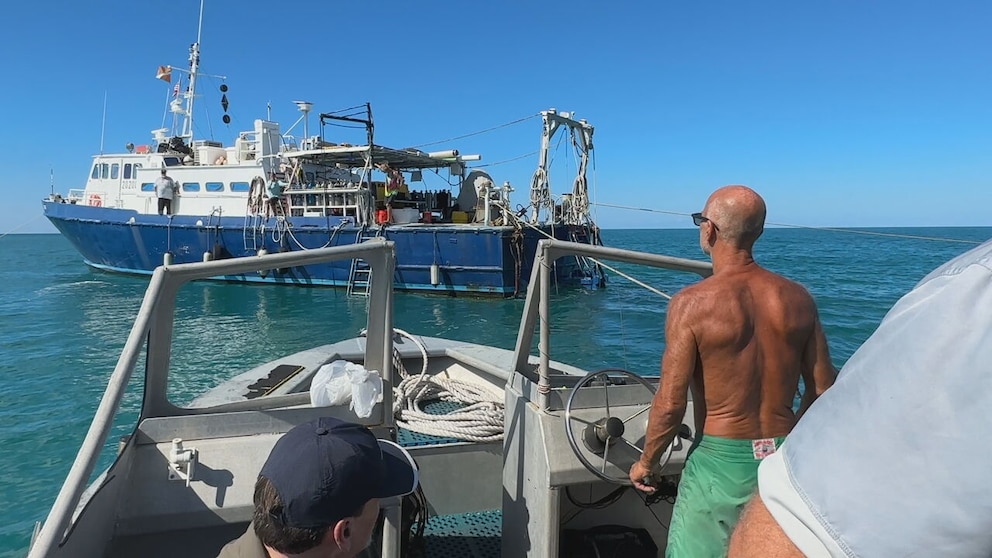
 abcnews.go.com
abcnews.go.com
The Dare is owned and operated by the company Mel Fisher's Treasures. It’s part of a fleet of salvage ships that have come to these waters for half a century searching for lost riches from the Nuestra Señora de Atocha, a Spanish galleon loaded with gold, silver and gemstones that sank off the Florida coast in a hurricane in 1622.

Treasure-hunting divers seek mother lode of riches from 400-year-old shipwreck
A shipwreck off Florida has brought salvage ships to the waters looking for the mother lode as archaeologist accuse them of destroying artifacts for financial gain.
- Messages
- 11,891
- Reaction score
- 2,580
- Points
- 238
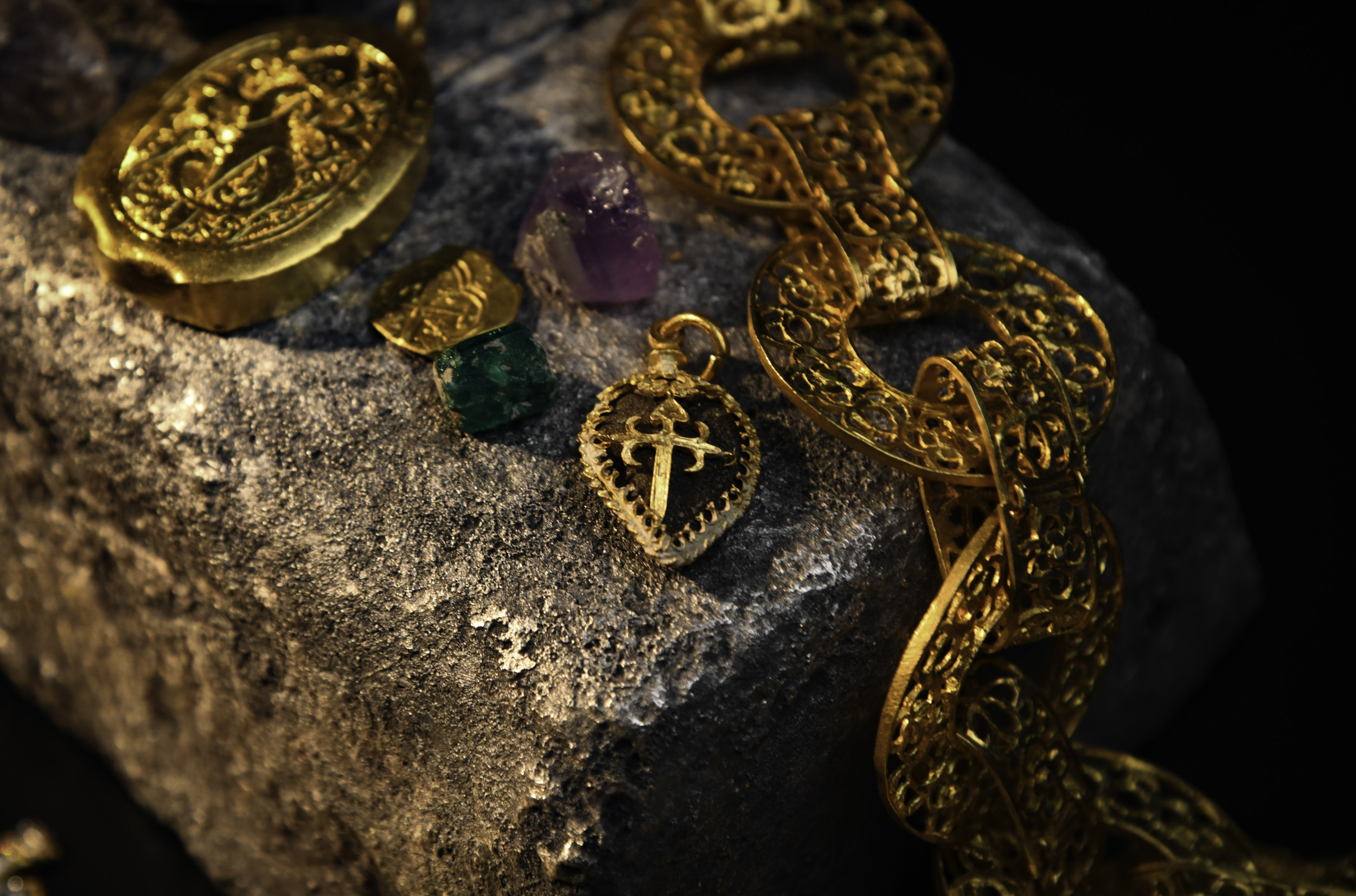
Divers discover fresh riches from sunken treasure ship thought picked clean
The finds from the 17th-century galleon—"one of the richest treasure ships" ever lost at sea—include gems and coins.
- Messages
- 1,456
- Reaction score
- 2,076
- Points
- 238
searcher: I own a piece of eight I found totally by accident while adjusting my diving gear as I was sitting on snowy white sand in about 20' of water. (the tank had slipped out) My right pinky fingle bumped it. I turned to look what it was, and damned near catted on the spot.
Divers discover fresh riches from sunken treasure ship thought picked clean
The finds from the 17th-century galleon—"one of the richest treasure ships" ever lost at sea—include gems and coins.www.newsweek.com
Began to whoosh sand away with my hands; the sand was only about 8" deep to white bed coral. After a while, another guy from the boat came up to me and gave me the WTF? sign. I held out the coin.
HIS eyes were now saucer-sized. He began swooping, too. Finally, a third guy came down, looked, went up. Then EVERYBODY came down to swoop sand. We burned two tanks each at about an hour a tank looking.
Mine was the only coin. I stopped in to talk to Mel Fisher about it, and he immediately identified if as a coin from the Nuestra Señora de las Maravillas. Even showed me the mint mark (Potosi), assayer's mark, and date (1655).
THEN he grilled me as to where I found it. He nodded, saying I was really lucky, since it was what he called a "dump coin"... treasure spilled out as the ship busted up. As the treasure spilled, it lightened the ship. The ship was pushed on by the high wind, laying a scattered trail.
Here it is:
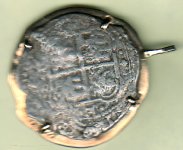
- Messages
- 11,891
- Reaction score
- 2,580
- Points
- 238
Persistence and 'a little bit of craziness' keeps Treasure Coast shipwreck salvor afloat
Treasure hunting is in Michael Perna's blood."There’s just really no doing anything else,” the professional historic shipwreck salvor said.
Years ago, he researched how to get out on the treasure salvage boats that dotted about a 35-mile stretch of ocean off the Treasure Coast. It's where the 1715 fleet of 11 Spanish ships sunk in a hurricane July 31, 1715, later inspiring the Treasure Coast's name. The treasure-laden ships are now strewn about the ocean floor from Sebastian to the St. Lucie Nuclear Plant.
Perna, of Vero Beach, got his dive certification, wound up on a boat and never looked back.
He’s been scouring the ocean floor ever since, for more than 20 years. He's found 1,500 coins, a candelabra set and a solid silver lion, among many other artifacts.
For the past five years, he's been working a mile-long area off Ambersand Beach in north Indian River County.
More:
- Messages
- 11,891
- Reaction score
- 2,580
- Points
- 238
For those on FB this is a neat site. It's a public group.
 www.facebook.com
www.facebook.com
Log into Facebook
Log into Facebook to start sharing and connecting with your friends, family, and people you know.
 www.facebook.com
www.facebook.com
- Messages
- 11,891
- Reaction score
- 2,580
- Points
- 238
Hoard of American and Russian Gold Coins Found in Polish Forest
A team of metal detectorists discovered a treasure hoard of American and Russian gold coins in a Polish forest recently.
The detectorists from the Szczecin Search Group Association were conducting a survey to find relics from WW2, in particular, traces of the Battle of Szczec, fought between the Soviet Red Army and the Wehrmacht.
They have found 70 coins deposited in a heavily corroded metal can buried at a depth of approximately 15 to 20 cm’s. The total discovery has been estimated to be worth 100,000 zloty, which is over 24,000 US dollars based on current conversion rates.
More:
A team of metal detectorists discovered a treasure hoard of American and Russian gold coins in a Polish forest recently.
The detectorists from the Szczecin Search Group Association were conducting a survey to find relics from WW2, in particular, traces of the Battle of Szczec, fought between the Soviet Red Army and the Wehrmacht.
They have found 70 coins deposited in a heavily corroded metal can buried at a depth of approximately 15 to 20 cm’s. The total discovery has been estimated to be worth 100,000 zloty, which is over 24,000 US dollars based on current conversion rates.
More:
- Messages
- 11,891
- Reaction score
- 2,580
- Points
- 238
Business Insider
Anthony Clake, a 43-year-old executive at Marshall Wace in London, has not been going to the bottom of the ocean himself, however. He's been investing in and directing high-tech operations to find lost treasures on the ocean floor.
Marshall Wace is one of the world's biggest hedge funds, managing assets worth about $62 billion.
More:
Cairo
Benmohr
A hedge fund exec is funding hunts for treasures in shipwrecks at the bottom of the ocean
- A 43 year-old hedge fund exec was revealed as one of the world's leading deep-sea treasure hunters.
- For years he's been funding missions and investing in high-tech tools to discover shipwrecks.
- Though not technically illegal, shipwreck hunters must register all their discoveries.
Anthony Clake, a 43-year-old executive at Marshall Wace in London, has not been going to the bottom of the ocean himself, however. He's been investing in and directing high-tech operations to find lost treasures on the ocean floor.
Marshall Wace is one of the world's biggest hedge funds, managing assets worth about $62 billion.
More:
A hedge fund exec is funding hunts for treasures in shipwrecks at …
ColoradanCairo
Benmohr
- Messages
- 11,891
- Reaction score
- 2,580
- Points
- 238
Colombia will try to raise objects from a 1708 shipwreck believed to have a cargo worth billions
The Colombian government says it will try to raise objects from the 1708 shipwreck of the galleon San Jose, which is believed to contain a cargo worth billions of dollars.

I found £2m gold bars in Iraqi tank and wish I'd never handed them in
EXCLUSIVE: Nick Mead discovered the five gold bars stashed inside the diesel tank of the ex-Iraqi Army Type 69, a Chinese copy of the Soviet T-55, back in 2017.

- Messages
- 11,891
- Reaction score
- 2,580
- Points
- 238
^^^^^^^
The guy in the story above (Nick Mead) is an interesting character.
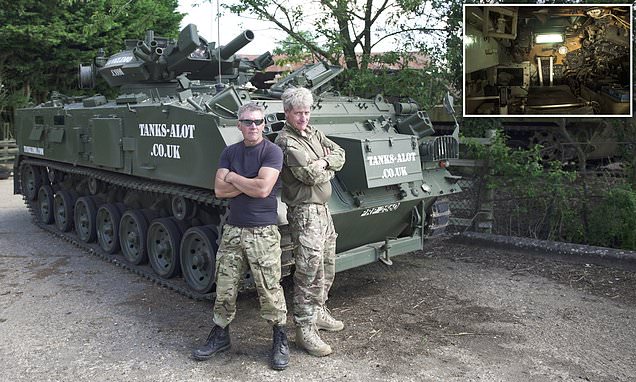
 www.dailymail.co.uk
www.dailymail.co.uk

 metro.co.uk
metro.co.uk
The guy in the story above (Nick Mead) is an interesting character.

Military enthusiast creates an incredible 22ft long stretch limo TANK
Nick Mead, 57, who owns 180 tanks, designed the vehicle by welding two former British Army FV432 APC personnel carriers together. He keeps it at his farm in Helmdon, Northamptonshire.

British man who sells tanks to Ukraine has bank account shut down by Barclays
Barclays said the decision was made to ‘mitigate risk’ after Nick Mead sold 100 military vehicles to Ukraine.


